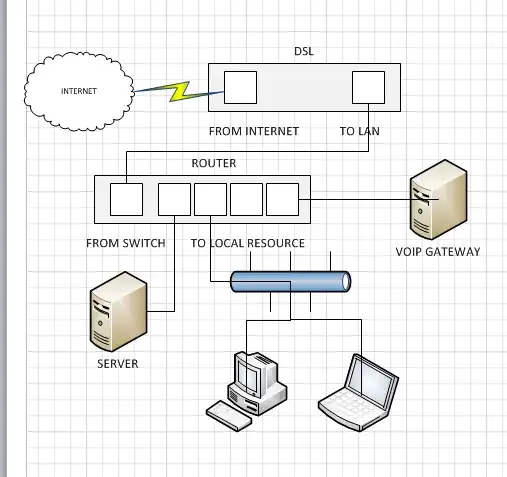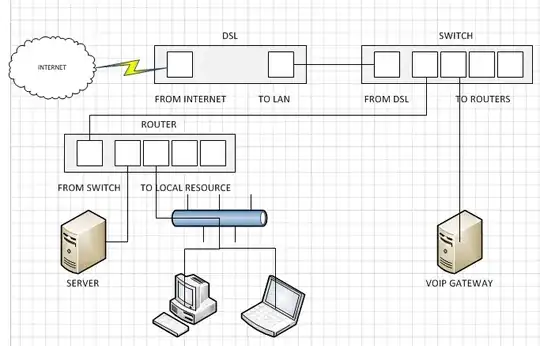I have a business class DSL line with AT&T and I have assigned to me a set of 5 static IP addresses that I need to setup for use. The account was recently changed over from a Standard DSL line with a dynamic IP to an account that now has these static IP addresses assigned to them.
This is needed so that some VOIP equipment that was purchased can have a static IP address assigned to it. Without doing any configuration changes on the wireless router (LinkSys E2500), the router is now getting the IP address that corresponds to the gateway that was assigned to my account.
My questions is, how do I go about assigning the static IP addresses to the other equipment on my network. The router I am using is pretty basic and the only option I am seeing in its settings for a static IP address allows me to enter 1 IP address and does not give me the option to configure PPPoE which is required by AT&T.
My assumption is that I will need to put a switch in between the dsl model and the wireless router and then plug in the VOIP device into that switch as well. I am hoping that my wireless router will than act as the gateway for the static IP addresses and then allow me to share the internet connection with the internal network. I will need to still route incoming connections to internal devices (remote desktop sharing, VPN) and this is where I am a bit fuzzy.
Since the wireless router I am using now has the gateway IP address, I would not believe I would be able to share that connection via NAT and since there does not seem to be any settings to manage more than one IP address I am wondering if this leaves me in a place where I will need more equipment. Can anyone add to advice or experience with a similar situation?


